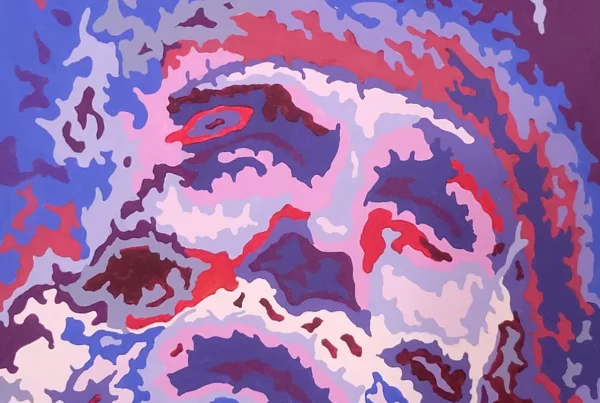Banner image: Dragonstone
47 cm × 47 cm × 18 cm
25 kg
2013
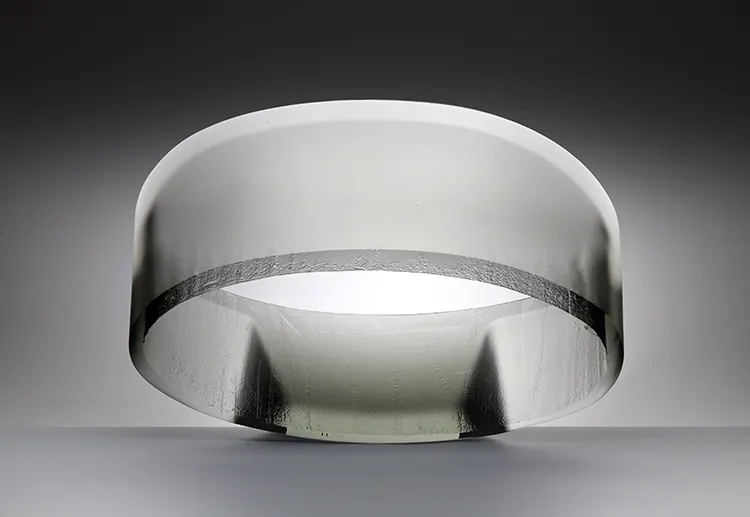
The Ring
34 cm × 49 cm × 9 cm
10 kg
2023
“Working with glass develops a particular type of thinking—similar to seeing far and near at the same time.”
Sculpting Light, Space, and Visions in Glass
Josef Marek’s journey into the world of glass art is as fascinating as the material he works with, shaped by unique life circumstances and an unrelenting pursuit of independence. Growing up in a family devoid of any artistic background, his initial path to creativity was both unconventional and transformative. A pivotal moment came when he attended the Secondary Glass School in Kamenický Šenov, an institution that would anchor his future in glasswork. This foundation led him to the Academy of Applied Arts and Architecture in Prague, where he specialized in Glass in Architecture.
A defining chapter in his artistic evolution was his year as the first exchange student at Alfred University in Upstate New York. Marek later took his talents to Japan, where he was working as a visiting professor at TIGA Toyama. Immersed in Japanese culture, he found profound inspiration in the elegance of traditional Japanese art, the sleek lines of modern architecture, and the serene beauty of the Tateyama Mountain range. These influences continue to echo in his creations, imbuing his work with a global resonance.
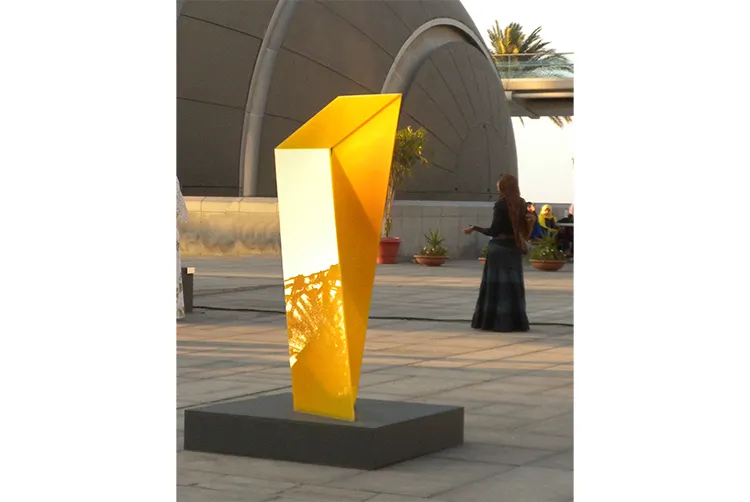
Vedge
300 cm × 50 cm × 60 cm
2010
Marek’s trajectory reflects not just a mastery of craft but also a deep engagement with the cultural and natural worlds that surround him. His ability to weave these elements into his artistic identity has solidified his reputation as a sculptor of remarkable originality and depth.
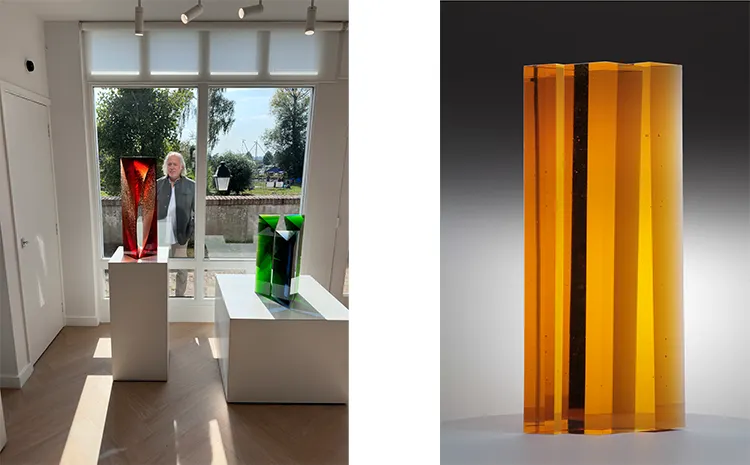
The artist Josef Marek with some of his sculptures
Man Rock
87 cm × 34 cm × 17 cm
80 kg
2022
Josef Marek: Crafting Space and Light Through Minimalism
Marek’s artistic style defies the conventions of many of his peers, sidestepping the pursuit of a personal trademark. His philosophy rejects the commercialization of art styles, favoring instead the purity of minimalism, purism, and elements of Cubism. Working with glass—a medium both delicate and commanding—he constructs geometric forms that create an illusion of spatial depth. His designs merge inner and outer structures, exploring the relationship between transparency and opacity, and placing these elements into perfect composition.
For Marek, the interplay of form, light, and space is paramount. Glass, with its unique capacity to reflect, refract, and reveal, demands both precision and imagination. His sculptures are conceived as intricate studies of spatial relationships, engaging the observer’s perception of distance and proximity. Marek’s process is rooted in the idea of crafting an object that communicates on multiple levels, inviting viewers to engage with its physical presence and metaphysical implications.
A vital component of his creative practice is the role of music, which he regards as a form of “brain therapy.” In particular, Marek draws deep inspiration from the music of Lucy Thomas, whose voice and presence he considers unparalleled. Thomas’s performances, he believes, bring tears to the eyes of any sensitive soul. In Marek’s studio, her melodies infuse the atmosphere with emotional resonance, guiding his focus and heightening the sensitivity he brings to each piece of art.
This approach is exemplified in one of his larger works, created during a symposium at the Bibliotheca Alexandrina in Egypt. The sculpture, constructed from float glass, captivates not only with its impressive scale but also its nuanced dialogue with the surrounding architecture. Now part of the library’s art collection, the piece stands as a testament to Marek’s ability to harmonize form, material, and context in a way that resonates deeply with its environment.
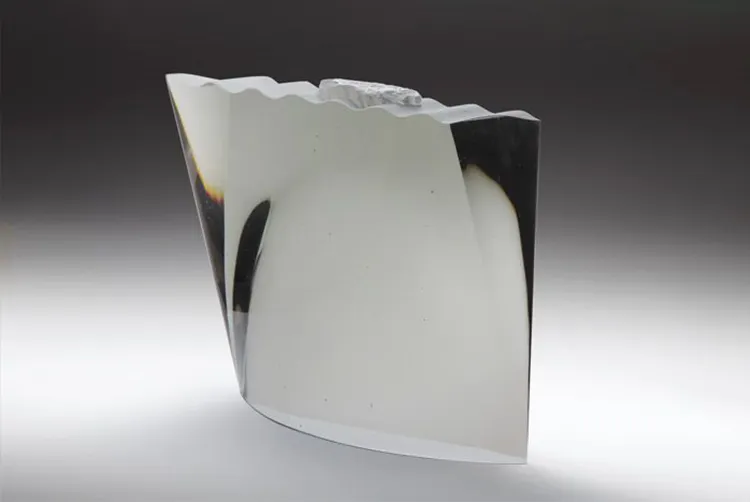
The Only Refuge Left
39 cm × 46 cm × 9.5 cm
24 kg
2023
The Fusion of Tradition and Experimentation
Marek’s creative process bridges the meticulous craft of traditional glasswork with bold experimentation. Drawing upon his foundational education, he has explored complex glass technologies while venturing into uncharted territories. One notable direction in his practice has been the combination of glass with stone, a pairing that juxtaposes the natural and the artificial, the opaque and the transparent.
The artist’s fascination with glass extends beyond its physical properties to its metaphysical qualities. He views the medium as a conduit for exploring profound concepts of light, space, and existence. In his words, glass reveals “the smallest particles of the fabric of the universe,” offering an extraordinary stage for the light. This perspective imbues his work with a sense of wonder, elevating it from mere craftsmanship to a philosophical exploration.

Icefall
48.5 cm × 36 cm × 15 cm
19.4 kg
2024
Granite Telescope
100 cm × 20 cm × 19 cm
2018
Josef Marek: The Eternal Vision of Glass in Architecture
Among Marek’s many aspirations, one stands out as particularly ambitious: the creation of glass facades for contemporary architecture. This dream encapsulates his desire to push the boundaries of his sculptures, transforming them from decorative elements into cornerstones of modern design. He envisions these facades as extraordinary intersections of aesthetics and functionality, capable of redefining the relationship between art and architecture.
His influences are deeply rooted in the works of sculptors like Henry Moore, Alexander Calder, Isamu Noguchi, and Constantin Brâncuși. From these masters, Marek has absorbed lessons in composition, balance, and the integration of art into its surroundings. Their philosophies have informed his approach to large-scale projects, where the placement of a sculpture is as significant as its form.
Marek’s artistry is perhaps best captured in his own reflections on the medium of glass. For him, the material is not merely a vehicle for expression but a profound metaphor for existence. By manipulating its transparency and interaction with light, he invites viewers to contemplate not just the artwork, but the deeper principles it represents. Whether in a gallery, a public space, or integrated into a building’s architecture, his creations speak to the universal and timeless language of beauty and innovation.




